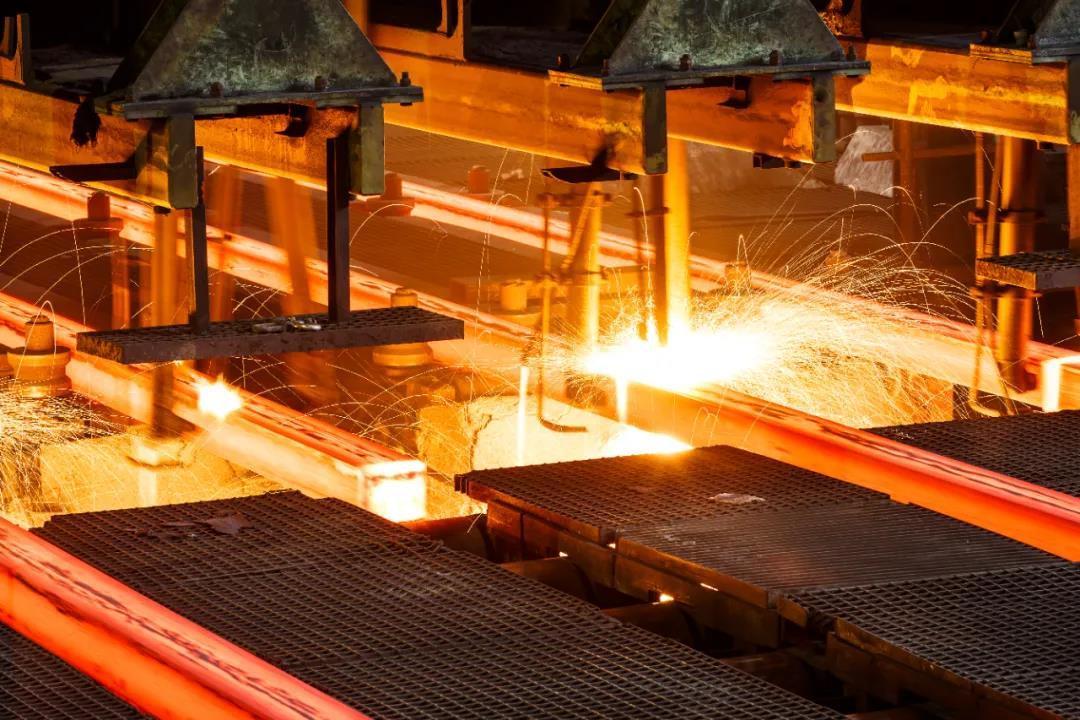What is carbon steel and its applications
1. Carbon steel: The backbone of the metallurgical field 2. The shining moment of carbon steel: Main application fields 3. Why Carbon Steel Has Stood the Test of Time
Jul 30,2025

1. Carbon steel: The backbone of the metallurgical field
Carbon steel is a metallic material with iron as the base and carbon as the main alloying element. It usually also contains manganese (0.3%-1.0%), silicon (≤0.4%), and trace amounts of phosphorus and sulfur as impurities. Its most notable feature is the carbon content - according to international standards (such as ASTM), the carbon content is typically between 0.05% and 2.11%, and this value directly determines the mechanical properties of the material. Unlike alloy steels such as stainless steel, carbon steel does not rely on precious metal elements like chromium and nickel to enhance performance; instead, it achieves characteristic regulation through the interaction of the crystal structure of carbon and iron.
From a microscopic perspective, the addition of carbon alters the crystal structure of iron: when the carbon content is below 0.25%, the steel mainly consists of ferrite (body-centered cubic structure), exhibiting excellent plasticity; when the carbon content rises above 0.4%, the proportion of pearlite (a layered mixture of ferrite and cementite) increases, resulting in a significant increase in strength and hardness. This correlation between composition and structure makes carbon steel a classic example of the "composition determines performance" theory in metallurgy.
Based on the different carbon contents, carbon steel can be classified into three major categories: low-carbon steel (carbon ≤ 0.3%), such as ASTM A36, which has excellent ductility (with a carbon content lower than 0.3%) and is highly suitable for bending and welding, and is often used for cold processing; medium-carbon steel (0.3% - 0.6%), such as 1045 steel, achieves a balance between strength and machinability, and is commonly used for mechanical parts; high-carbon steel (0.6% - 2.11%), such as 1095 steel, has a hardness of over 60HRC after quenching and can have extremely high hardness after heat treatment, but loses some toughness. It is the core material for tool manufacturing. This classification method is widely adopted by the global manufacturing industry and serves as the basic basis for material selection in engineering design.
2. The shining moment of carbon steel: Main application fields
The versatility of carbon steel enables it to penetrate every corner of modern industry, from urban landmarks to daily necessities. Its application scope is far broader than that of other metal materials.
The adaptability of carbon steel enables it to occupy a core position in various industries worldwide, from infrastructure to daily necessities.
Architecture and Infrastructure: Low-carbon steel (such as ASTM A36 steel) is the main material for buildings, bridges, and pipelines. It has an ultimate tensile strength of up to 36,000 - 58,000 psi (pounds per square inch) and excellent welding properties, making it an ideal choice for structural steel beams, reinforcing bars, and water/air pipelines. In skyscrapers like the Burj Khalifa in Dubai, carbon steel frames support the huge weight of the building.
Automobiles and Transportation: Medium-carbon steel is commonly used in automotive components that require durability - axles, gears, and suspension components. High-carbon steel, after heat treatment, due to its high hardness and wear resistance, becomes the key material for brake pads and springs. Even in electric vehicles, carbon steel is used to manufacture the chassis and battery casings due to its cost advantage.
Manufacturing and Tools: High-carbon steel is indispensable in cutting tools, knives, and mechanical parts. It can maintain sharp edges (with a hardness of up to 60 HRC), making it a common material for industrial blades and drill bits. Blacksmiths and metal workers also prefer it because of its good response to heat treatment.
Energy and Heavy Machinery: Oil drilling platforms, power plant boilers, and mining equipment rely on the ability of carbon steel to withstand high pressure and high temperatures. For example, ASTM A516 steel is used in pressure vessels for storing and transporting volatile fluids, while thick carbon steel plates form the hulls of ships and offshore platforms.
3. Why Carbon Steel Has Stood the Test of Time
In the era when new materials such as aluminum alloys and carbon fibers have emerged, carbon steel still accounts for over 70% of global metal material consumption. Its vitality stems from three core advantages:
The cost controllability is particularly outstanding. The cost of producing 1 ton of ordinary carbon steel is only 1/3 of that of stainless steel and 1/20 of that of titanium alloy. This cost advantage makes it the preferred choice for large-scale infrastructure construction - among the 1.8 billion tons of steel produced globally each year, carbon steel accounts for over 90%.
The convenience of processing is also irreplaceable. Low-carbon steel can be made into ultra-thin strips of 0.1mm through cold rolling (such as for car body panels), while high-carbon steel can achieve complex shapes (such as crankshafts) through forging. In contrast, the forging temperature of titanium alloy needs to exceed 900℃, and the energy consumption is more than 3 times that of carbon steel.
In terms of sustainability. The recycling rate of carbon steel is as high as 92%, far exceeding that of plastics (9%) and aluminum (32%). The "short process" steelmaking technology of European steel mills, which melts scrap steel in an electric arc furnace, reduces carbon emissions by 70% compared to traditional blast furnace steelmaking. The Swedish HYBRIT project, which was put into operation in 2023, has even achieved hydrogen-based steelmaking, with carbon steel produced per ton emitting only 0.1 tons of carbon, a reduction of 99% compared to traditional processes.
In addition, continuous technological innovation continuously injects new vitality into carbon steel. Japan's JFE has developed super high-carbon steel (with a carbon content of 1.5%) that breaks through the tensile strength of 2000MPa through nano precipitation strengthening; Baosteel has developed the third-generation automotive steel (with a carbon content of 0.12%) that maintains a 20% elongation at a strength of 1500MPa, providing a new solution for lightweighting of electric vehicles. These breakthroughs prove that this ancient material is still evolving.
In an era where new materials are constantly emerging, the reason why carbon steel remains indispensable is due to its low cost, recyclability (with a global steel recycling rate exceeding 90%) and ease of processing. Through heat treatment or adding a small amount of elements for alloying, its properties can be adjusted, which makes it the preferred choice for engineers when balancing performance and budget.
From the bolts in homes to the bridges connecting cities, the value of carbon steel lies in its ability to meet diverse needs. This also proves that sometimes the simplest things possess the greatest power. From the dome framework of the Sydney Opera House to the mechanical arm joints of the International Space Station, carbon steel, with its unique "combination of hardness and flexibility" characteristic, supports the operation of modern civilization. Its story is not only a history of materials, but also reflects humanity's precise control over metallic properties. In the triangular balance of cost, performance and sustainability, carbon steel always holds an unshakable position.
PREVIOUS:



